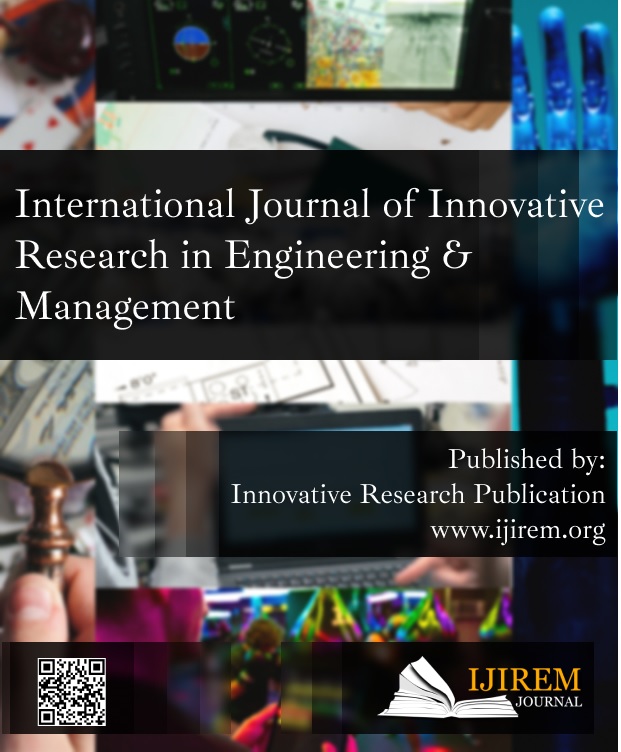Issues, Trends, and Implications in Management Education in India
Keywords:
Business School, Education in India, Higher Education, Management Education, ManagementAbstract
Management education is regarded as elitist since it attracts young men and women who are usually driven by the advantages of management education. In India, higher education, especially management education, is exploding in terms of the number of schools offering management education, often known as Business Schools. After the financial turbulence in the United States and the case of Satyam in India, this essay aims to analyze the present situation of management education in India. This research also examines contemporary trends in management education in India, with the goal of determining the influence management education has on India's industry and people. It also intends to investigate new issues in management education and to provide possible strategies and policies for enhancing management education in India. Because there hasn't been much study done in this area, this article will fill a gap in the present literature.
Downloads
References
P. S. Matreja, J. Kaur, and L. Yadav, “Acceptability of the use of crossword puzzles as an assessment method in pharmacology,” J. Adv. Med. Educ. Prof., 2021, doi: 10.30476/jamp.2021.90517.1413.
L. Anderson, P. Hibbert, K. Mason, and C. Rivers, “Management Education in Turbulent Times,” Journal of Management Education. 2018, doi: 10.1177/1052562918779421.
J. Rai, R. C. Tripathi, and N. Gulati, “A comparative study of implementing innovation in education sector due to COVID-19,” 2020, doi: 10.1109/SMART50582.2020.9337148.
M. M. Gupta, S. Jankie, S. S. Pancholi, D. Talukdar, P. K. Sahu, and B. Sa, “Asynchronous environment assessment: A pertinent option for medical and allied health profession education during the covid-19 pandemic,” Education Sciences. 2020, doi: 10.3390/educsci10120352.
S. Shukla, A. Lakhmani, and A. K. Agarwal, “A review on integrating ICT based education system in rural areas in India,” 2017, doi: 10.1109/SYSMART.2016.7894531.
F. . Fanni et al., “Distance learning across continents: What is a ‘Traditional Learner’ anyway?,” Int. J. Educ. Dev. using Inf. Commun. Technol., 2005.
M. Tas and H. O. Yeloglu, “The need for technology management education for undergraduate programs:
A conceptual framework,” Univers. J. Educ. Res., 2018, doi: 10.13189/ujer.2018.060206.
S. Sharma, V. Vijayaraghavan, P. Tandon, D. R. V. Kumar, H. Sharma, and Y. Rao, “Dental education: Current scenario and future trends,” J. Contemp. Dent. Pract., 2012, doi: 10.5005/jp-journals-10024-1103.
R. Bedi, “A futures study of dental decay in 5 and 15 year olds in England,” Health Education Journal. 2005.
C. A. Chrvala, D. Sherr, and R. D. Lipman, “Diabetes self-management education for adults with type 2 diabetes mellitus: A systematic review of the effect on glycemic control,” Patient Education and Counseling. 2016, doi: 10.1016/j.pec.2015.11.003.
M. Storey, S. Killian, and P. O’Regan, “Responsible management education: Mapping the field in the context of the SDGs,” Int. J. Manag. Educ., 2017, doi: 10.1016/j.ijme.2017.02.009.
J. Burchell, S. Kennedy, and A. Murray, “Responsible management education in UK business schools: Critically examining the role of the United Nations Principles for Responsible Management Education as a driver for change,” Manag. Learn., 2015, doi: 10.1177/1350507614549117.
R. Mahajan, R. Agrawal, V. Sharma, and V. Nangia, “Factors affecting quality of management education in India: An interpretive structural modelling approach,” Int. J. Educ. Manag., 2014, doi: 10.1108/IJEM-10- 2012-0115.
N. C. Joshi, Z. Ahmad, S. K. Mishra, and R. Singh, “Formulation and evaluation of matrix tablet of Tramadol hydrochloride,” Indian J. Pharm. Educ. Res., 2011.
S. Rahman, A. Al Masum, F. Sharmin, S. M. Ashraful Islam, and S. Reza, “Formulation and evaluation of bi layered sustained release matrix tablets of tramadol hydrochloride,” J. Appl. Pharm. Sci., 2012, doi: 10.7324/JAPS.2012.2638.
A. Z. Bhat, V. R. Naidu, and B. Singh, “Multimedia Cloud for Higher Education Establishments: A Reflection,” 2019, doi: 10.1007/978-981-13-2285- 3_81.
Y. Li, X. Luan, and H. X. Chen, “An analysis on the necessity of business and management education for design students,” 2015, doi: 10.1201/b18558-255.
G. M. Sanjeev and A. K. Birdie, “The tourism and hospitality industry in India: emerging issues for the next decade,” Worldwide Hospitality and Tourism Themes. 2019, doi: 10.1108/WHATT-05-2019-0030.
G. M. Sanjeev and S. Tiwari, “Responding to the coronavirus pandemic: emerging issues and challenges for Indian hospitality and tourism businesses,” Worldw. Hosp. Tour. Themes, 2021, doi: 10.1108/WHATT-06-2021-0088.
P. K. Malviya, “Management Education in India: Issues & Challenges,” Adhyayan A J. Manag. Sci., 2014, doi: 10.21567/adhyayan.v4i1.10194.
A. Chawla, “FDI in Indian Education Sector: An Analytical Study,” Int. J. Trend Sci. Res. Dev., 2018, doi: 10.31142/ijtsrd14401.
S. Kumar, “Management Education in India: Trends, Issues and Implications,” 2011.
L. U., M. K., and K. O.N., Environment, development and poverty: a report of the international workshop on
India’ s forest management and ecological revival. 1995.
L. Dwyer, “Trends Underpinning Tourism to 2015: An Analysis of Key Drivers for Change,” Int. J. Tour. Sci., 2003, doi: 10.1080/15980634.2003.11434550.
P. Rao and Y. Patil, “Progressive trends in implementing climate change courses in higher education curriculum at Symbiosis International University, Pune, India,” in Higher Education Institutions in a Global Warming World: The Transition of Higher Education Institutions to a Low Carbon Economy, 2017.
